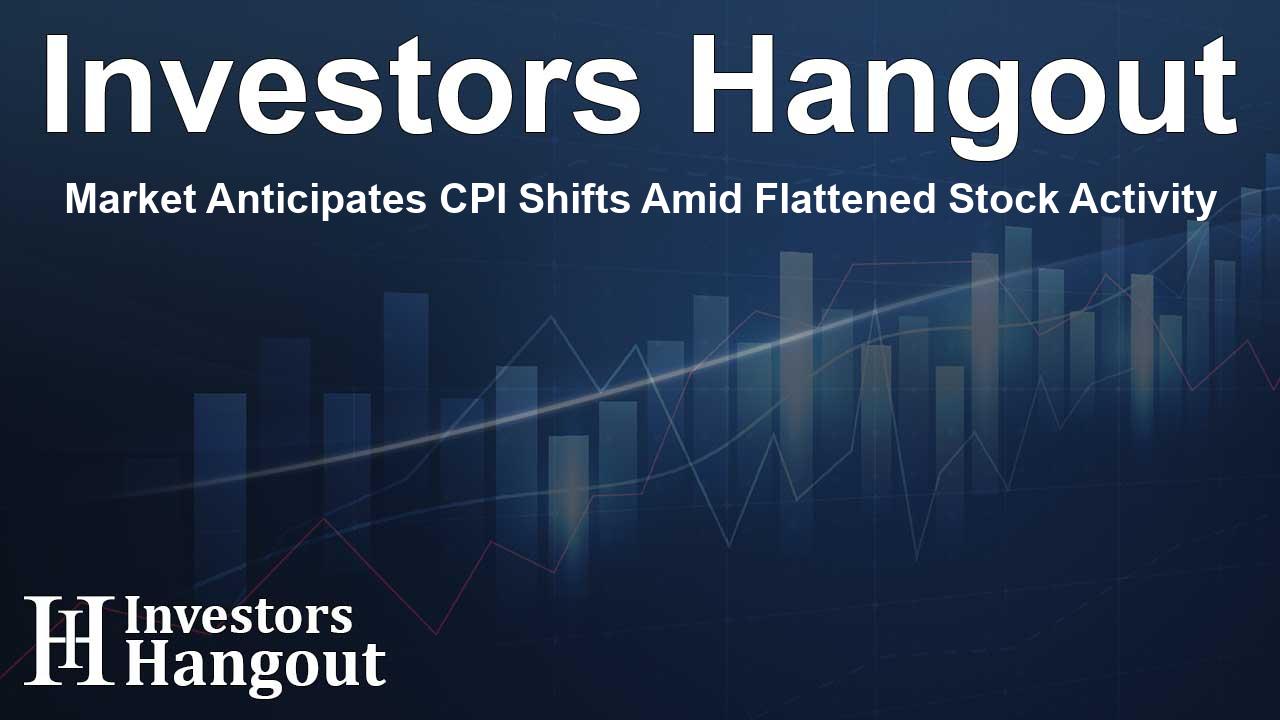Market Anticipates CPI Shifts Amid Flattened Stock Activity

Market Overview Ahead of CPI Report
Stocks have maintained a steady course recently as investors hold their breath for critical economic data ahead. Expectations lean towards a CPI report that shows both core and headline inflation nudging slightly upwards. Analysts are forecasting a 0.3% increase month-over-month for both measures, leading some to speculate whether inflation concerns are creeping back into the market psyche.
CPI Swaps and Their Significance
In the context of this economic landscape, CPI swaps play a pivotal role. Currently, January swaps are hovering around 2.93%. Although this figure falls short of pushing the headline number past the 3% mark, the volatility suggests that traders are wary of a potentially surprising CPI release. Kalshi’s metrics suggest a core CPI may hit 3.2% year-over-year, which sheds light on the growing fears surrounding inflation.
Rising Inflation Concerns
An uptick in the 2-year CPI swap, reaching approximately 2.7%, has sparked apprehension across financial markets. Should upcoming data support these rising expectations, the swap rate might aim for around 2.85%, indicating a fresh resistance level. Interestingly, the 5-year inflation swap also recorded significant gains, marking a local closing high, which generally implies heightened inflationary fears across the board.
Impact on Market Dynamics
Meanwhile, developments in the U.S. bond market are worth noting. The 10-year yield broke above its previous downtrend, maintaining a support level around 4.4%. This scenario prompts a contrast against the sluggish movement of the S&P 500, which has been stable yet stagnant since mid-December. Volume trends have notably dipped, setting up intriguing dynamics; history suggests that a volume resurgence often signals the re-emergence of sellers.
Potential Market Reactions
Should the CPI report yield adverse outcomes, it could rekindle fears that the Federal Reserve might halt rate cuts, leading inflation expectations to rise even more. Given the S&P 500's current valuations, the market may struggle to absorb additional bear steepening, particularly if the long-term yield continues to climb relative to short-term rates. This situation showcases the intricate nature of bond yields, particularly the 30-year minus 3-month yield pattern which further hints at steepening trends.
Understanding Market Terms
To better grasp these market concepts, let’s simplify some key terms:
1. Swaps Market – A sector where derivatives are exchanged based on inflation indices, allowing participants to manage their risks associated with inflation.
2. Inflation Expectations – These are often measured through instruments like the 2-Year CPI Swap. An increase usually signals growing concerns over future inflation trends.
3. Bear Steepening – A term indicating a scenario where long-term interest rates rise more quickly than short-term rates, hinting at inflationary pressures or potential tightening of monetary policy.
4. Yield Curve Analysis – The 30-year minus 3-month yield spread offers insights into the market's inflation expectations and economic outlook. A steep curve can suggest anticipated growth while inversions might foreshadow recession risks.
5. Kalshi Pricing Analysis – Traders use prediction markets like Kalshi to place bets on economic outcomes like future CPI prints, providing insight into collective market sentiment.
Frequently Asked Questions
What is the CPI report and why is it important?
The CPI report measures the average change over time in the prices paid by consumers for goods and services, serving as a key indicator of inflation and economic health.
How do CPI swaps work?
CPI swaps allow market participants to exchange fixed and floating payments based on inflation indices, essentially serving as a hedge against inflation risks.
What could a surprising CPI result signal for the stock market?
A surprising CPI result could lead to increased volatility in the stock market, impacting investor sentiment and possibly influencing Federal Reserve policy.
How does inflation affect bond yields?
As inflation expectations rise, bond yields often increase, reflecting higher required returns by investors to compensate for diminished purchasing power.
Why is the S&P 500 reacting to inflation data?
The S&P 500 is sensitive to inflation data as rising inflation can alter earnings expectations and interest rate policies, directly impacting stock valuations.
About The Author
Contact Olivia Taylor privately here. Or send an email with ATTN: Olivia Taylor as the subject to contact@investorshangout.com.
About Investors Hangout
Investors Hangout is a leading online stock forum for financial discussion and learning, offering a wide range of free tools and resources. It draws in traders of all levels, who exchange market knowledge, investigate trading tactics, and keep an eye on industry developments in real time. Featuring financial articles, stock message boards, quotes, charts, company profiles, and live news updates. Through cooperative learning and a wealth of informational resources, it helps users from novices creating their first portfolios to experts honing their techniques. Join Investors Hangout today: https://investorshangout.com/
The content of this article is based on factual, publicly available information and does not represent legal, financial, or investment advice. Investors Hangout does not offer financial advice, and the author is not a licensed financial advisor. Consult a qualified advisor before making any financial or investment decisions based on this article. This article should not be considered advice to purchase, sell, or hold any securities or other investments. If any of the material provided here is inaccurate, please contact us for corrections.
